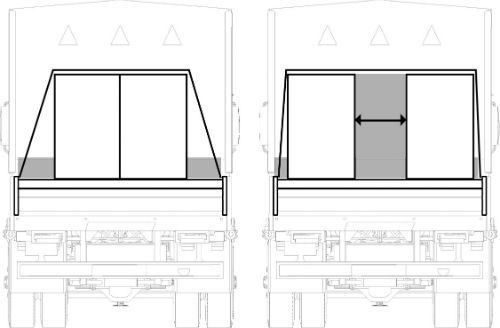Review Questions - Click On The Picture To Begin...

- The acceleration due to gravity, 9.823 m/sec2 (32.2 ft/sec2).
- The maximum load that may be applied to a component of a cargo securement system during normal service, usually assigned by the manufacturer of the component.
- The summation of the working load limits or restraining capacity of all devices used to secure an article on a vehicle.
- The number of hours that a tiedown can be used.
Quote From The CDL Manual:
Working Load Limit (WLL):
The maximum load that may be applied to a component of a cargo securement system during normal service, usually assigned by the manufacturer of the component.
- 2 tiedowns for every 10 ft, or part thereof.
- 1 tiedown for every 10 ft, or part thereof.
- 1 tiedown for every 15 ft, or part thereof.
- 1 tiedown for every 5 ft, or part thereof.
Quote From The CDL Manual:
When cargo is prevented from forward movement (for example, by the headboard, bulkhead, other cargo, or tiedown), secure the cargo according to the following requirements:

All Cargo:
1 tiedown for every 10 ft, or part thereof.
- 4
- 2
- 1
- 3
Quote From The CDL Manual:
-
If load is 5ft or shorter, 1,100 lbs or lighter:
Minimum number of tiedowns: 1
-
If load is 5ft or shorter, over 1,100 lbs:
Minimum number of tiedowns: 2
-
If load is more than 5ft but less than 10ft:
Minimum number of tiedowns: 2
- A rail along the side of a vehicle that protects the side of the vehicle from impacts.
- A device placed between the deck of a vehicle and car or between articles of cargo, intended to provide greater friction than exists naturally between these surfaces.
- A strip of material that may be used to unitize articles and is tensioned and clamped or crimped back upon itself. (same as "Strapping")
- A platform or tray on which cargo is placed so that it can be handled as an article. (Same as "Skid")
Quote From The CDL Manual:
Rub Rail:
A rail along the side of a vehicle that protects the side of the vehicle from impacts.
- Place them in direct contact with each other.
- Make sure it is leaning forward.
- Use some kind of blocking to prevent shifting.
- Fill the empty space between with other cargo.
Quote From The CDL Manual:
For articles of cargo placed beside each other and secured by side-to-side tiedowns:

Either place them in direct contact with each other,
Or prevent them from shifting towards each other in transit by using blocking or filling the space with other cargo.







 Related Cargo Securement Terms That Every Driver Should Know:
Related Cargo Securement Terms That Every Driver Should Know: 



 TT On Facebook
TT On Facebook